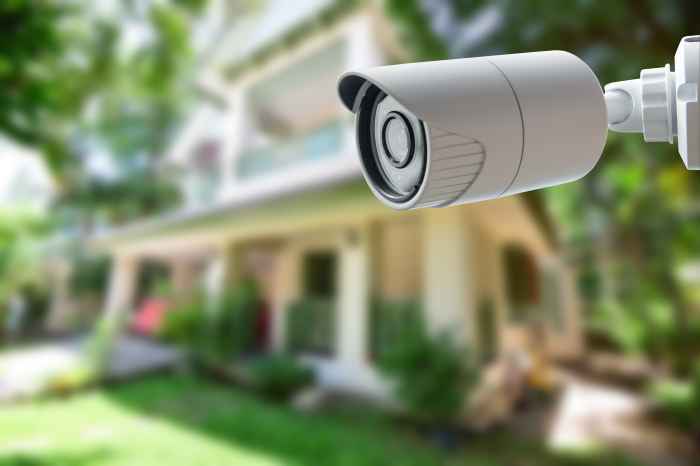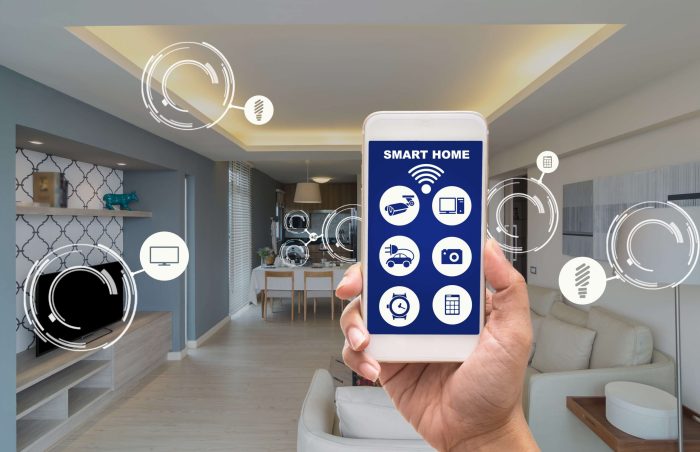Delving into smart security system installation, this introduction immerses readers in a unique and compelling narrative. From the importance of safeguarding your home or business to the intricate process of integrating cutting-edge features, this guide covers it all.
Planning for the installation involves careful consideration of key components and detailed steps, while the installation process itself can present challenges that need to be overcome. Discover how additional features like smart locks and surveillance cameras can elevate your security system to the next level.
Overview of Smart Security Systems Installation

Installing a smart security system is crucial in today's world to protect your home or business from potential threats. These systems offer advanced features and technology to enhance the safety and security of your property.
Key Components of a Smart Security System
- Surveillance Cameras: These cameras provide real-time monitoring of your property and can help deter criminal activity.
- Motion Sensors: Motion sensors can detect any movement or activity in specific areas and trigger alerts.
- Smart Locks: Smart locks allow you to control access to your property remotely and keep track of who enters and exits.
- Alarm Systems: Alarm systems can alert you and authorities in case of a security breach or emergency.
- Mobile App Integration: Many smart security systems come with mobile apps that allow you to monitor your property from anywhere.
Benefits of Having a Smart Security System
- Enhanced Security: Smart security systems provide round-the-clock protection and offer peace of mind knowing your property is secure.
- Remote Monitoring: With mobile app integration, you can monitor your property in real-time and receive alerts on your smartphone.
- Deterrent to Criminals: The presence of surveillance cameras and other security components can deter criminals from targeting your property.
- Insurance Benefits: Some insurance companies offer discounts for properties with installed security systems, leading to potential cost savings.
Planning for Installation
When it comes to installing a smart security system, proper planning is crucial to ensure optimal security coverage for your property. This involves assessing the layout of the property, choosing the right system, and considering various factors to enhance security measures.
Initial Steps in Planning
- Conduct a thorough security assessment of your property to identify vulnerable areas that need to be covered by the system.
- Determine the number of entry points, such as doors and windows, that require sensors for monitoring.
- Consider the placement of security cameras for maximum coverage and visibility.
- Decide on the type of sensors and detectors needed based on the layout and size of the property.
Choosing the Right Smart Security System
- Consider the specific security needs of your property, such as indoor and outdoor monitoring, remote access, and integration with other smart devices.
- Research different smart security systems available in the market to find one that meets your requirements and budget.
- Look for systems with advanced features like motion detection, night vision, and two-way audio for enhanced security measures.
- Ensure that the system is compatible with your existing smart home devices for seamless integration and control.
Assessing the Layout of the Property
- Map out the layout of your property to identify blind spots and high-risk areas that require extra security measures.
- Consider the range and coverage of security cameras and sensors to ensure they can monitor key areas effectively.
- Place cameras at strategic locations, such as entryways, driveways, and backyard, to deter intruders and capture any suspicious activity.
- Optimize the positioning of sensors and detectors to minimize false alarms and maximize security coverage.
Installation Process
Installing a smart security system is a crucial step in enhancing the safety and security of your home or business. The process involves setting up various components to work seamlessly together to monitor and protect your property.
Step-by-Step Installation Process
- 1. Plan the placement of cameras and sensors: Determine the strategic locations for cameras and sensors to ensure optimal coverage.
- 2. Install the control panel: Mount the control panel in a central location within your property for easy access and visibility.
- 3. Connect cameras and sensors: Follow the manufacturer's instructions to connect and configure the cameras and sensors.
- 4. Set up the monitoring system: Install the monitoring software on your smartphone or computer to receive real-time alerts and footage.
- 5. Test the system: Perform thorough testing to ensure all components are functioning correctly before activating the system.
Tools and Equipment Required
- - Screwdriver
- - Drill
- - Mounting brackets
- - Ethernet cables
- - Power adapters
- - Smartphone or computer for monitoring
Common Challenges and Solutions
- - Connectivity issues: Ensure that cameras and sensors are within range of the control panel and connected to a stable Wi-Fi network.
- - Power supply problems: Check the power source and cables to ensure proper connection and functionality.
- - Configuration errors: Double-check the settings and configurations of each component to troubleshoot any issues.
Integrating Additional Features

When it comes to enhancing the security of your smart security system, integrating additional features can provide an extra layer of protection. Features like smart locks, surveillance cameras, and motion sensors not only complement the existing system but also offer advanced security functionalities.
Smart Locks
Smart locks are a popular add-on feature that allows you to remotely control access to your home. With smart locks, you can lock or unlock your doors from anywhere using your smartphone. This feature enhances security by providing you with real-time access control and the ability to monitor who enters and exits your property.
Surveillance Cameras
Surveillance cameras are essential for monitoring your property and deterring potential intruders. These cameras provide live video feeds that can be accessed remotely, allowing you to keep an eye on your home at all times. Some advanced surveillance cameras come with motion detection and night vision capabilities, further enhancing the security of your property.
Motion Sensors
Motion sensors are another valuable addition to your smart security system. These sensors can detect any movement in and around your home, triggering alerts that notify you of potential threats. By integrating motion sensors, you can enhance the overall security of your property and respond quickly to any suspicious activity.
Summary

In conclusion, smart security system installation is a crucial step towards enhancing the safety and protection of your property. By following the guidelines Artikeld in this comprehensive guide, you can ensure a robust security system that meets your needs and provides peace of mind.
Commonly Asked Questions
What are the key components of a smart security system?
The key components typically include cameras, sensors, control panel, and connectivity devices.
How do I choose the right smart security system for my location?
Consider factors like property size, layout, desired features, and budget when selecting a smart security system.
What tools are required for installing a smart security system?
Common tools needed include a drill, screwdriver, ladder, and cable management tools.
How do additional features like smart locks enhance security?
Smart locks provide added convenience and control over access to your property, enhancing overall security.
What are some common challenges during smart security system installation?
Challenges may include wiring issues, connectivity problems, or configuration difficulties.










